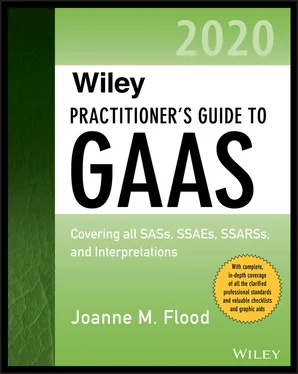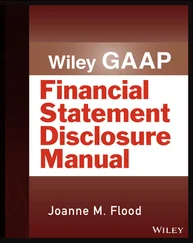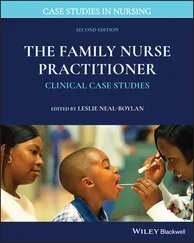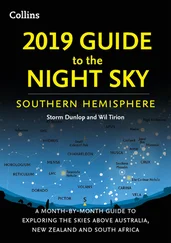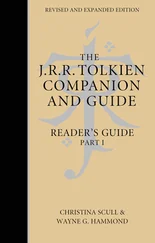In July 2019, the ASB issued SAS 137, The Auditor’s Responsibilities Relating to Other Information Included in Annual Reports. The new SAS is designed to enhance transparency relating to the auditor’s responsibilities for other information included in annual reports and to reduce diversity in practice. SAS No. 137 clarifies the scope of documents that the auditor is required to subject to the procedures and states that though a document may be referred to as an annual report, such document may not meet the definition of annual report for purposes of the SAS. The determination as to which documents constitute the entity’s annual report is often difficult when the entity does not have a regulatory requirement to prepare an annual report or a framework that dictates what that annual report should contain. The new SAS includes a requirement for the auditor to obtain management’s written acknowledgment regarding which document or documents comprise the annual report.
The ASB has a project to develop a guide for an examination engagement on internal controls, other than an audit of ICFR that is integrated with a financial statement audit.
Accounting and Review Standards
In May 2018 the ARSC issued SSARS 24, Omnibus Statement on Standards for Accounting and Review Services—2018. SSARS No. 24 creates a new AR-C section—100, Special Considerations—International Reporting Issues. This new section applies when:
The financial statements have been prepared in accordance with a financial reporting framework generally accepted in another country, or
The compilation or review is to be performed in accordance with both the SSARS and another set of compilation or review standards.
SSARS No. 24 also amends AR-C 60 and AR-C 90 to harmonize the SSARS with AR-C 930 on auditing international financial information for going concerns.
SSARS No. 24 amends AR-C 90.39 to make the content of the review report consistent with the examples in Exhibit C of AR-C 90. Note that practitioners who have not been reporting in accordance with the illustrative reports should update their report templates.
Except for the revision to AR-C 90.39, which is effective immediately, SSARS 24 is effective for compilations and reviews of financial statements for periods ending on or after June 15, 2019. The changes are included in the appropriate chapters in this book.
This publication is current through SAS No. 137, SSARS 24, and SSAE 18.
Joanne M. Flood
September 2020
Joanne M. Flood, CPA, is an author and independent consultant on accounting and auditing technical topics and e-learning. She has experience as an auditor in both an international firm and a local firm and worked as a senior manager in the AICPA’s Professional Development group. She received her MBA summa cum laude in accounting from Adelphi University and her bachelor’s degree in English from Molloy College. Joanne received the New York State Society of Certified Public Accountants Award of Honor for outstanding scholastic achievement at Adelphi University. Joanne also has a certificate in Designing Interactive Multimedia Instruction from Teachers College, Columbia University.
While in public accounting, Joanne worked on major clients in retail, manufacturing, and finance and on small business clients in construction, manufacturing, and professional services. At the AICPA, Joanne developed and wrote e-learning, text, and instructor-led training courses on US and international standards. She also produced training materials in a wide variety of media, including print, video, and audio, and pioneered the AICPA’s e-learning product line. Joanne resides on Long Island, New York, with her daughter, Elizabeth. Joanne is the author of the following Wiley publications:
Financial Disclosure Checklist
Wiley GAAP 2020: Interpretation and Application of Generally Accepted Accounting Principles
Wiley Practitioner’s Guide to GAAS 2020: Covering All SASs, SSAEs, SSARSs, and Interpretations
Wiley GAAP: Financial Statement Disclosures Manual (Wiley Regulatory Reporting), coming soon
Wiley Revenue Recognition
1 AU-C 200 Overall Objectives of the Independent Auditor and the Conduct of an Audit in Accordance with Generally Accepted Auditing Standards
Scope SCOPE AU-C 200 describes the auditor’s overall responsibilities when conducting a GAAS audit, including the auditor’s overall objectives and the nature and scope of the audit. Also included in AU-C 200 are the scope, authority, and structure of GAAS. (AU-C 200.01)
Definitions of Terms DEFINITIONS OF TERMS Source: AU-C 200.14. For definitions related to this standard, see Appendix A , “Definitions of Terms”: Applicable financial reporting framework, Audit evidence, Audit risk, Auditor, Detection risk, Financial reporting framework, Financial statements, Historical financial information, Interpretive publications, Management, Misstatement, Other auditing publications, Premise, relating to the responsibilities of management and, when appropriate, those charged with governance, on which an audit is conducted (the premise), Professional judgment, Professional skepticism, Reasonable assurance, Risk of material misstatement, Those charged with governance.
Objectives of AU-C Section 200 OBJECTIVES OF AU-C SECTION 200 The overall objectives of the auditor, in conducting an audit of financial statements, are to 1 obtain reasonable assurance about whether the financial statements as a whole are free from material misstatement, whether due to fraud or error, thereby enabling the auditor to express an opinion on whether the financial statements are presented fairly, in all material respects, in accordance with an applicable financial reporting framework; and 2 report on the financial statements, and communicate as required by GAAS, in accordance with the auditor’s findings. (AU-C 200.12) If reasonable assurance cannot be obtained and a qualified opinion is insufficient, the auditor must either disclaim an opinion or withdraw from the engagement when possible under applicable law or regulation. (AU-C 200.13)
Requirements REQUIREMENTS Management’s Responsibilities Financial statements are prepared by management with oversight from those charged with governance. GAAS do not impose requirements on management or those charged with governance, but rather an audit is conducted on the premise that management and those charged with governance understand their responsibilities. (AU-C 200.05) Many times clients do not understand their responsibilities for audited financial statements. The financial statements are management’s . They contain management’s representations. The form and content of the financial statements are management’s responsibility, even if the auditor prepared them or participated in their preparation. Management also is responsible for implementing and maintaining an effective system of internal control.
Management’s Responsibilities
Auditor’s Objectives
Ethical Requirements
Professional Judgment and Skepticism
Complying with GAAS COMPLYING WITH GAAS Auditors must comply with and understand relevant AU-C sections, that is, those that are in effect and address the circumstances of the audit. (AU-C 200.20 and .21) GAAS uses two categories of professional requirements to describe the degree of responsibility the standards impose on auditors. 1 Unconditional requirements. The auditor is required to comply with an unconditional requirement in all cases in which the circumstances exist to which the unconditional requirement applies. SASs use the word must to indicate an unconditional requirement. 2 Presumptively mandatory requirements. The auditor is also required to comply with a presumptively mandatory requirement in all circumstances where the presumptively mandatory requirement exists and applies. However, in rare circumstances, the auditor may depart from a presumptively mandatory requirement. The departure should only relate to a specific procedure when the auditors determine that the procedure would be ineffective in the specific circumstances. The auditors must document their justification for the departure and how the alternative procedures performed in the circumstances were sufficient to achieve the objectives of the presumptively mandatory requirement. GAAS use the word should to indicate a presumptively mandatory requirement. (AU-C 200.25–.26) The term should consider means that the consideration of the procedure or action is presumptively required, whereas carrying out the procedure or action is not. AU-C Section 200 also clarifies that explanatory material is intended to explain the objective of the professional requirements, rather than imposing a professional requirement for the auditor to perform.
Читать дальше
